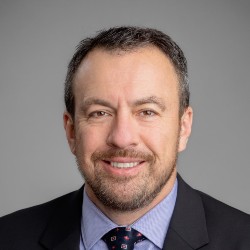When Credo Semiconductor went public in January 2022, conditions in the US IPO market were starting to get ugly. The huge glut of listings over the previous two years, plus regulatory scrutiny of special purpose acquisition companies (Spacs) and falling tech valuations, had led many investors to step back.
But Credo’s strong relationships with investors, bankers and other advisers, built over the previous three years, helped steer the company through a listing on Nasdaq, where it raised $230 mn.
Founded in 2008, the firm occupies a niche area in the semiconductor market, providing chips and other products that help data centers and wireless network operators move data around quickly in a power-efficient manner.

Successful semiconductor firms tend to end up going public or being acquired, so Credo wanted to prepare for both eventualities, explains Dan O’Neil, vice president of corporate development and IR.
The former investment banker, who spent several years working on IPOs at Alex Brown and Deutsche Bank, joined the company in 2018 as a consultant and set about building links among the banking and financial communities. That included taking Credo, while still private, to investment conferences, such as Needham & Company’s New York event in January 2019.
‘By attending those conferences, we could meet with public company investors, understand their expectations and begin to develop relationships,’ O’Neil says.
‘In addition, we commenced meetings with numerous investment bankers and research analysts, who I’ve grown to know personally over the years and we thought would be relevant to our company.’
Public market insight
Another milestone in the IPO journey came in March 2020, when Credo completed a series D funding worth around $100 mn. Like the IPO two years later, the funding round took place amid adverse market conditions, in this case the onset of the Covid-19 pandemic. With an eye on the future, Credo approached two high-profile public market investors – BlackRock and Capital Research – to lead the capital-raising.
‘They could give us the guidance and understanding of what public company investors might want to see, if we eventually went public,’ explains O’Neil. Both firms would go on to become cornerstone investors in the IPO, enhancing the credibility of the listing, he adds.
IPO preparations kicked off in earnest in spring 2021. Different sets of advisers came on board, internal departments were built out to prepare for public life and the possibility of a Spac merger was considered but ultimately discarded.
During the year, discussions took place about the best time to list. Credo had to take into account its financial calendar, the availability of customer announcements, worsening investor sentiment and processing delays at the SEC. In the end, the management team and its advisers settled on an IPO window of mid-January 2022.
During the IPO roadshow, investor questions focused on the strength of the management team, the outlook for growing the business and why it made sense to go public now.
Given the niche area in which Credo operates, the company also had to help investors get up to speed on the technology and industry. ‘That was something we invested a lot of time in,’ says O’Neil. ‘We had to develop precise answers that started out simple, but then could provide as much depth as was necessary.’
Looking back on the IPO, O’Neil says getting started early and forging the right contacts was crucial to success. ‘There isn’t much I would do differently, but I would emphasize what worked well for us, which was meeting with all the various parties well ahead of time to develop those relationships,’ he recalls.
‘When tough times came, and the market was faltering, our team had the confidence to trust those relationships.’
This article originally appeared in the Fall 2022 issue of IR Magazine.










